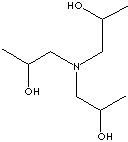| |||||||||||||||||||||||||||||||||||||||||||||||||||||||||||||||||||||||||||||||||||||||||||||||||||||||||||||||||||||||||||||||||||||||||||||||||
Thứ Sáu, 2 tháng 9, 2011
TRIISOPROPANOLAMINE | TIPA |
 Kinh doanh hóa chất công nghiệp
Email:tvh789@gmail.com
Email:tranvanhung68@gmail.com
Kinh doanh hóa chất công nghiệp
Email:tvh789@gmail.com
Email:tranvanhung68@gmail.com
Hexamoll® DINCH for medical devices – Feel Safe
Hexamoll® DINCH for medical devices – Feel Safe
The combination of an excellent toxicological profile and a very low migration rate makes Hexamoll® DINCH the plasticizer of choice for medical devices made with soft PVC products such as- tubes for enteral feeding and hemodialysis
- bags
- respiratory tubes
- catheters
- gloves
- breathing masks
As the most investigated plasticizer in the market, Hexamoll® DINCH supports the latest recommendations for the use of alternatives for medical devices.
Hexamoll® DINCH has an excellent toxicological profile:
- No reproductive hazards: no testicular toxicity, no impairment of fertility, no teratogenicity, no endocrine action
- No peroxisome profileration
- No carcinogencity
- No environmental hazards
The data contained in this publication are based on our current knowledge and experience. In view of the many factors that may affect processing and application of our product, these data do not relieve processors from carrying out their own investigations and tests; neither do these data imply any guarantee of certain properties, nor the suitability of the product for a specific purpose. Any descriptions, drawings, photographs, data, proportions, weights etc. given herein may change without prior information and do not constitute the agreed contractual quality of the product. It is the responsibility of the recipient of our products to ensure that any proprietary rights and existing laws and legislation are observed. (August 2008)
Nhãn:
hoa chat nganh duoc
 Kinh doanh hóa chất công nghiệp
Email:tvh789@gmail.com
Email:tranvanhung68@gmail.com
Kinh doanh hóa chất công nghiệp
Email:tvh789@gmail.com
Email:tranvanhung68@gmail.com
Đăng ký:
Nhận xét (Atom)
